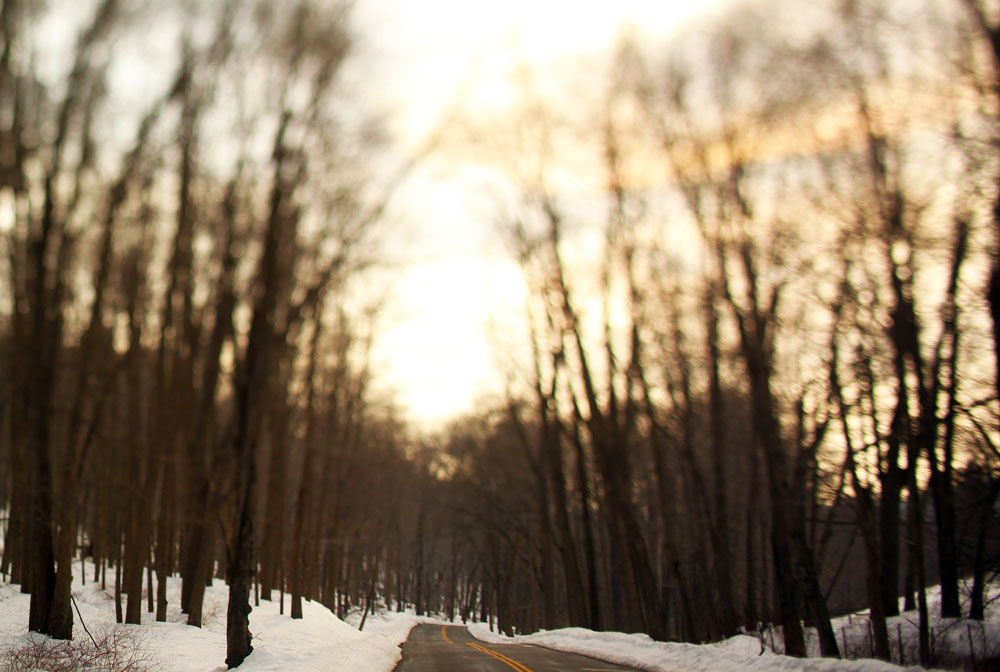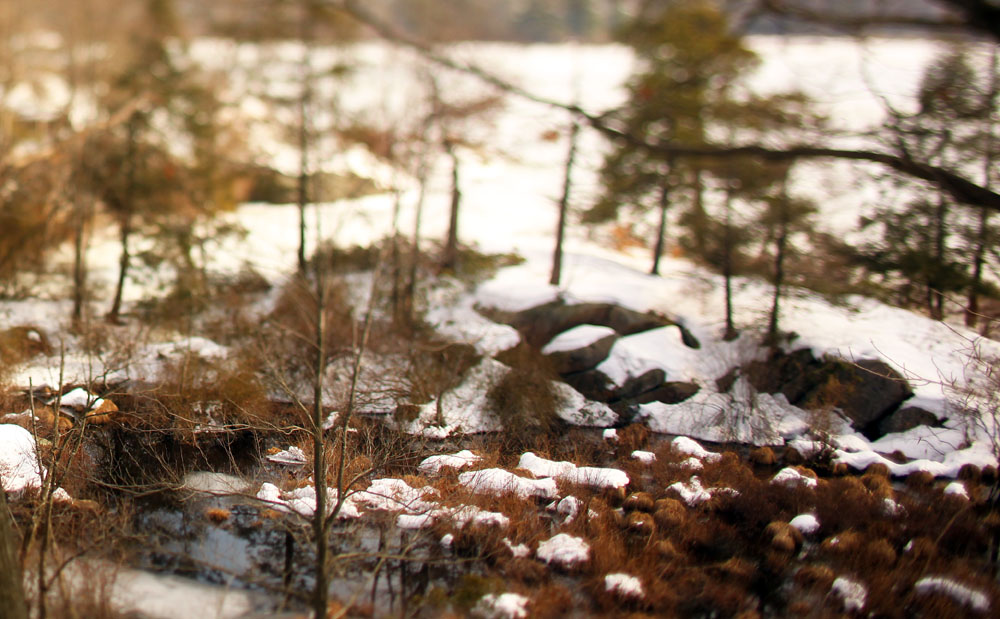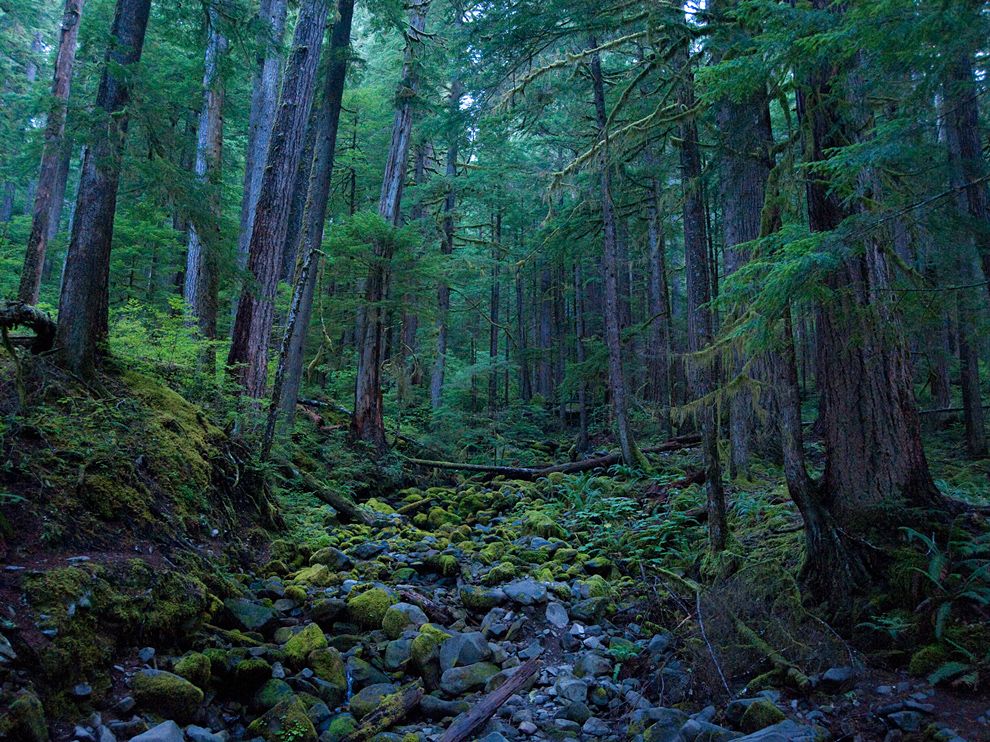
Tired of the nakedness of deciduous forests in winter, you can look for the places the hemlocks grow. Take Arden Valley Road — closed from Elk Pen parking area to Lake Kanawauke — to reach the gate for Island Pond, and the hemlock woods. ©Suzy Allman.
Hiking Harriman’s Hemlock Woods
Eyes tired of the winter: of blackening snow at the edge of the parkway, of tawny fields, the rattling nakedness of the upland hardwood forest in winter. Grey-brown, all around. Lately, I’m looking for the green cover of a hemlock woods.
Other area parks perhaps do the deep winter forest better: The Appalachian Trail in Sterling Forests’ northern edge, where it intersects Route 91, cuts through a lovely hemlock wood. And Pelton Pond, in Fahnestock to the north, is surrounded by hemlock along the yellow-blazed trail.
But in Harriman State Park, a quiet, peaceful place where laural and hemlock grow is near Island Pond. Healthy stands of hemlock split boulders along the Appalachian Trail near to the shore. In the marshy land to the south of the pond, you’ll find hemlock on the red-blazed Arden-Surebridge and Dunning trails, and along Island Pond Road, connecting these two old trails.

Bing Maps shows the location of hemlock forests and ravines near Island Pond, Harriman State Park. You can see where the green fills the ravines and valleys, away from Harriman’s rocky, glacier-scraped ridges. The brown that predominates is deciduous.
Evergreens are also plentiful at the edge of Green Pond, south of Island Pond. Just make sure you’re wearing spikes if you’re hiking this area in icy conditions.
Bing Maps provide a good way to locate stands of hemlock before you set out on your hike or cross-country ski expediation. By chance, the satellite image of Harriman (at least, at present) was taken in winter, and so you can easily sort the brown from the green (and learn something about where hemlocks occur). Zoom in on the Harriman area, using the “Aerial” map setting.
When the snow is deep — as it is now, even still — you might want to take an easier route to Island Pond. Leave Elk Pen parking area, follow the (closed to traffic) Arden Valley Road uphill and away from the Thruway. You’ll skirt private land to the left, and wind uphill for a little over a mile before reaching the gate to the pond, on the right. This will lead you to the boat launch at the edge of the pond, and the intersection of the Appalachian Trail, where hemlock and laurel forests grow.

Hummocks grow in an inlet of Island Pond in Harriman State Park. The pond is ringed by evergreen hemlock and mountain laurel. ©Suzy Allman
By the way, if you’re hard-core into hemlock forests in winter, you may go so far as to drive out to the State College area of Pennsylvania to hike among five-hundred-year-old hemlocks. Yep, that’s right. Read this description of the Alan Seeger Natural Area, and then experience it yourself:
“Nestled in a broad bowl along Standing Stone Creek is the 390-acre old-growth forest of the Alan Seeger Natural Area. Although in the heart of charcoal and furnace country, this tract of old growth trees was spared the axe because of a boundary dispute between two logging companies. (I wish that there had been more such disputes!) The deep soils along the stream provide a great substrate for this Natural Area’s trees and shrubs, including ancient eastern hemlocks, white pines, white oaks, tuliptrees, black gums and an extraordinarily thick understory of massive rhododendrons. The tallest trees in the Natural Area are white pines and tuliptrees close to 140 feet high. The Alan Seeger Natural Area also has the finest stand of old growth black gum in the state and an equally impressive old growth mixed-oak forest on the mountain slope above is considered to be one of the best in Pennsylvania.”





there are some nice evergreens near lake nawahunta off the menomine from silvermine. also some birches on the blue disc and some evergreens on some of the woods roads near the blue disc. XC skiing is good now as the ice has softened up and there is still plenty of snow left.